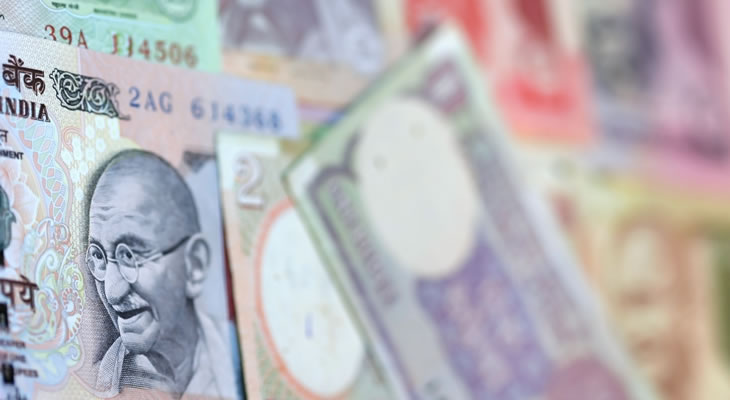- Stronger second quarter GDP not enough to boost Pound – Underlying trends seemed to point towards third quarter slowdown
- Less-than-hawkish Fed policy meeting encouraged Rupee demand – Risk appetite boosted by decreasing likelihood of 2016 rate hike
- GfK Consumer Confidence Index forecast to undermine Sterling further – Sentiment expected to have weakened sharply in July
- Bullish Indian Manufacturing PMI predicted to weigh on GBP INR exchange rate – Rupee likely to benefit from signs of robust domestic growth
Bearishness continued to dominate the outlook of the GBP INR exchange rate on Thursday, with investors discouraged by persistent worries over the negative impact of Brexit-based uncertainty on the UK economy.
Pound (GBP) Trended Lower despite Second Quarter UK GDP Bettering Forecast
Contrary to expectations the Pound (GBP) did not benefit from a stronger-than-forecast second quarter UK GDP headline figure on Wednesday. While growth was found to have accelerated from 0.4% to 0.6% on the quarter markets were more interested in the finer details of the report. The lion’s share of GDP had been generated in April, leaving the economy to begin stagnating somewhat through May and June as referendum uncertainty rose. As a result the outlook did not appear overly positive for the post-Brexit economy, considering the weakening already seen in July’s flash PMIs. In response analysts at Lloyds Bank noted:
‘Once more data are available on actual activity in June, a downward revision is possible, notably to industrial output. Moreover, the comparatively strong outturn for Q2 points to some compensating weakness in Q3 GDP overall. On the basis of the very early evidence for July so far, we would expect GDP growth to stagnate over Q3 and likely over the second half of the year.’
Demand for higher-risk currencies such as the Rupee (INR) weakened in anticipation of July’s Federal Open Market Committee (FOMC) policy meeting. The emerging market currency was weighed down by the strength of the US Dollar (USD), even though markets did not expect any change in policy at this juncture. Investors did, however, anticipate that policymakers would return to a more hawkish outlook in response to the strength of recent domestic data and limited impact of the Brexit vote. Consequently this allowed the Pound to Rupee (GBP INR) exchange rate to recover some ground throughout the later European session.
Less Hawkish Fed Meeting Boosted Rupee (INR) on Surge in Risk Appetite
As the Fed was ultimately viewed to have adopted a less hawkish tone than markets had hoped to see the Rupee received a strong boost overnight. While a number of pundits still predict that the central bank could raise interest rates before the end of the year the chances of such a move seemed to be reduced. With negative global headwinds continuing to hinder the Fed in spite of stronger domestic data this led to a sharp decrease in safe-haven demand, benefitting the Rupee.
Confidence in Sterling remained weak on Thursday morning, in spite of a better-than-expected Nationwide House Price Index for July. Although the indicator suggested that the domestic housing market was in more robust state than predicted this was undermined by the fact that the impact of the Brexit vote was unlikely to have had time to filter through properly into the measure. A profit warning from the UK’s largest estate agent group furthered the impression that the market will see greater pressure in the coming months, prompting investors to move away from the Pound.
With the latest US data seeming to further undermine the case for the Fed to resume monetary tightening the GBP INR exchange rate extended its losses during the afternoon, with little to dissuade markets from favouring higher-risk currencies.
GBP INR Exchange Rate Forecast: Weaker Consumer Confidence to Extend Pound Downtrend
Support for the Pound is likely to remain limited ahead of the weekend, with the GfK Consumer Confidence Survey expected to offer additional evidence of the recent deterioration in domestic sentiment. Mortgage and credit data set for release later on Friday will be of only limited interest to investors, given their relative staleness in relation to other, post-Brexit data. However, as forecasts suggest that lending weakened in the run-up to the referendum any signs of additional softness are expected to exert downside pressure on the GBP INR exchange rate.
At the start of next week markets will see some heightened volatility in response to the release of the July Manufacturing PMIs. While the Indian result is predicted to show fresh strength on the month the appeal of the Rupee could be dented if the Chinese manufacturing sector demonstrates renewed slowness. Even so, it appears unlikely that the Pound will find a rallying point unless the finalised PMI for July shows a significant improvement on the flash result.
Current GBP, INR Exchange Rates
At the time of writing, the Pound to Indian Rupee (GBP INR) exchange rate was slumped in the region of 88.0890, while the Indian Rupee to Pound (INR GBP) pairing was trending higher around 0.0113.


Comments are closed.